Your Cart is Empty

It seems like whole, natural squid have taken on the underdog role in the world of offshore trolling baits, facing competition from more glamorous and popular options such as artificial squid, flashy trolling lures, and rigged ballyhoo.
The description of the squid as an odd-looking mollusc that moves by squirting water through its body highlights its unconventional nature compared to other bait options. Despite its less glamorous appearance, trolling whole squid in certain situations make it a very effective bait.
Anglers often have their preferences and biases towards specific baits based on experience, regional practices, or perceived effectiveness. It's interesting to note how different baits and lures gain popularity or fall out of favor over time, and the underdog status of the squid in this context adds a layer of intrigue to the world of offshore trolling.
Arguably, every fish in the ocean will eat a squid. They are like shrimp to an inshore fisherman. Whole squid are popular among anglers pursuing swordfish and are still quite popular in Australia. In this article, we'll delve into fishing for mahi in scattered grass and explore the tips and techniques to optimize your chances of landing that prized catch.
Topics discussed:
MAHI FISHING IN SCATTERED GRASS
Picture this: a sunny day on the open ocean, a nice gentle breeze, and calm seas. It’s mahi season and the thrill of a vibrant and acrobatic Mahi Mahi at the end of your line awaits.
Mahi Mahi, also known as dolphinfish or dorado, are often found near floating debris, seaweed, and scattered grass. These vibrant, fast-swimming fish are attracted to the shelter and abundance of prey these environments provide.
Scattered grass can often be so frustrating it is tempting to leave feeding fish. I hope to convince you to try whole squid trolled with a weedless rigging the next time you find yourself in a similar situation.
As with any bait, starting with a quality and fresh bait is critical to success.
Squid change to a pink color as they age. Always look for pale white squid with clear eyes.
There are a variety of squid species available in bait shops. I have had the most success with California squid.
Often squid intended for trolling are available in bait shops. Typically, these are intended for swordfishing. These are not the squid we will be discussing. We will be using a whole bait squid with a tube length of approximately 5” not including the head and tentacles.
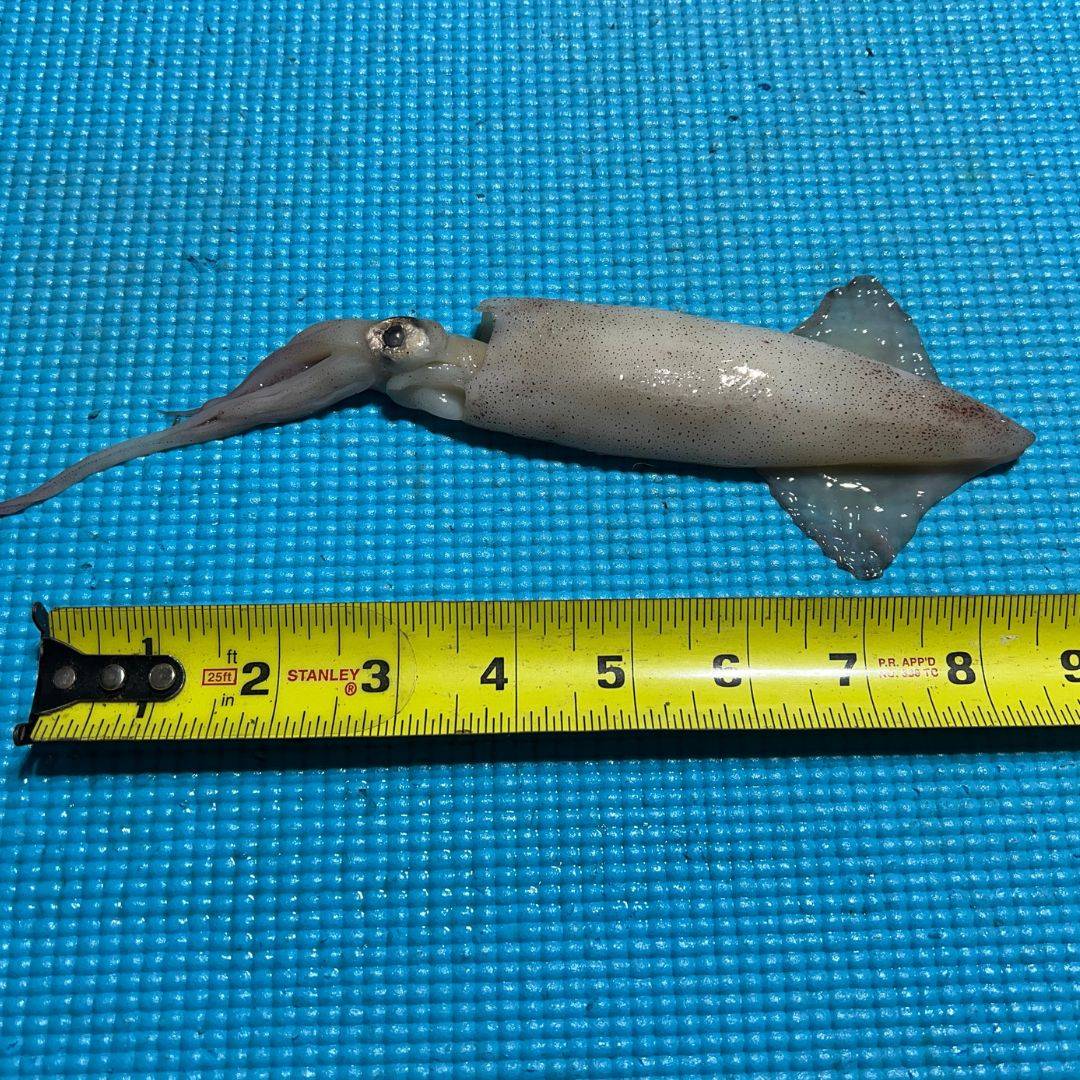
These squid will have been packaged loose and flash frozen. Open the container and inspect the squid. Ensure they have not been physically damaged. The head and tentacles are an important part of this lure. You want them to be in good physical condition.
Frozen squid need to be thoroughly thawed before rigging. Working with partially thawed squid makes them fragile and susceptible to damage.
Thaw the squid in salt water if possible. If not, allow them to look without water. Thawing in freshwater has a tendency to make the squid mushy.
Protect the tentacles throughout the thawing and rigging process.
Use the following step by step instructions to make the rig:
Begin by using a 6’ long piece of 50 lb test monofilament. You can use heavier leader, but lighter is not recommended. You will have to push this leader up through the body of the squid so it needs to have some rigidity to it.
Tie a 5/0 Mustad 3407 or similar style J-hook to one end of the leader using a loop knot. The hook size is pretty important.

On these size squid, a 5/0 hook will work well. Larger hooks may fit into the squid, but can deform the natural shape of the squid and cause it not to troll naturally.
Slide an aluminum crimp onto the leader and crimp it slightly approximately 5” from the eye of the hook. The crimp should be tight enough to stay in place, but maintain the ability to adjust it on the leader so the hook can be appropriately placed in the squid.
Next slide a bead onto the leader and then a 3/4 oz egg sinker.
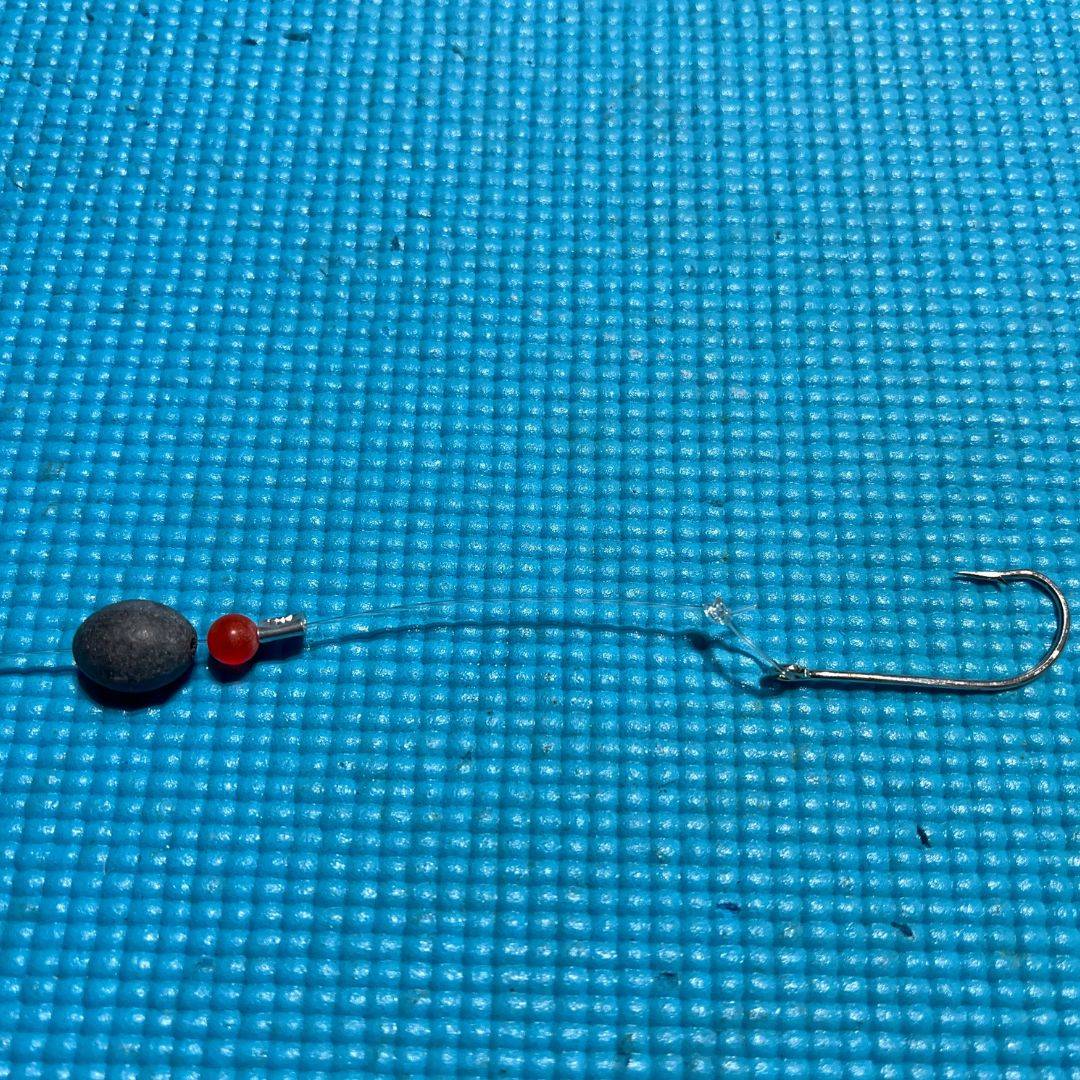
Cut a small hole in the very tip of squid.
Carefully slide the leader up through the squid while disturbing the internal organs as little as possible.
Insert the hook through the squid head between the eyes.
Position the egg sinker inside the tip (tail) of the squid. Hold the egg sinker in place in the squid and slowly pull the leader through the crimp and pull the hook and squid head up into the mantle of the squid.
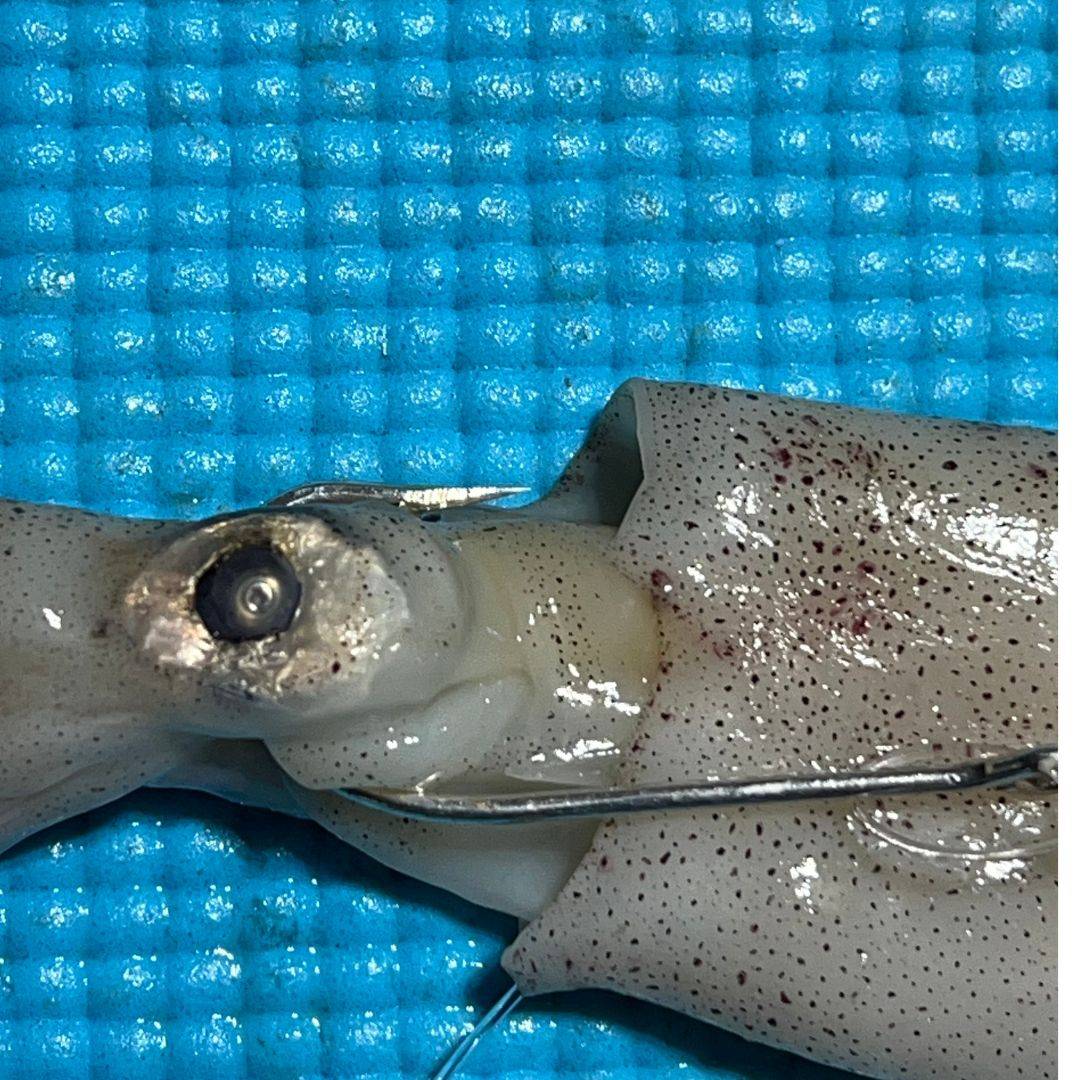
The rigged squid can be trolled naked or a skirt can be added. The shape of the skirt’s head is very important. It needs to shed grass well. A bullet head is perfect. A chugger style head would not be recommended.
As the bait is deployed, watch how it trolls beside the boat. Adjust the rigging as necessary so the bait tracks well. Usually this could involve adjusting the rig length so that the hook is drawn up into the squid but does not deform the shape of the squid.
When you are satisfied with the bait, you can start dropping it back.
Remember that when trolling in scattered grass the main line will catch the majority of the grass. The further back the baits are, the more likely they are to catch grass.
Start with baits closer to the boat and then work the baits back as you see how things go.
Squid are inherently tough and can be trolled for a long time. Hopefully they get hit before long!
Cut up worn out squid and save them. Toss them over to hold schooling mahi beside the boat or for bailing dolphin.
The majority of grass will be shed off the lure. Keep a close eye on all the baits. If a bait catches some grass, jig the bait to help shed the grass.
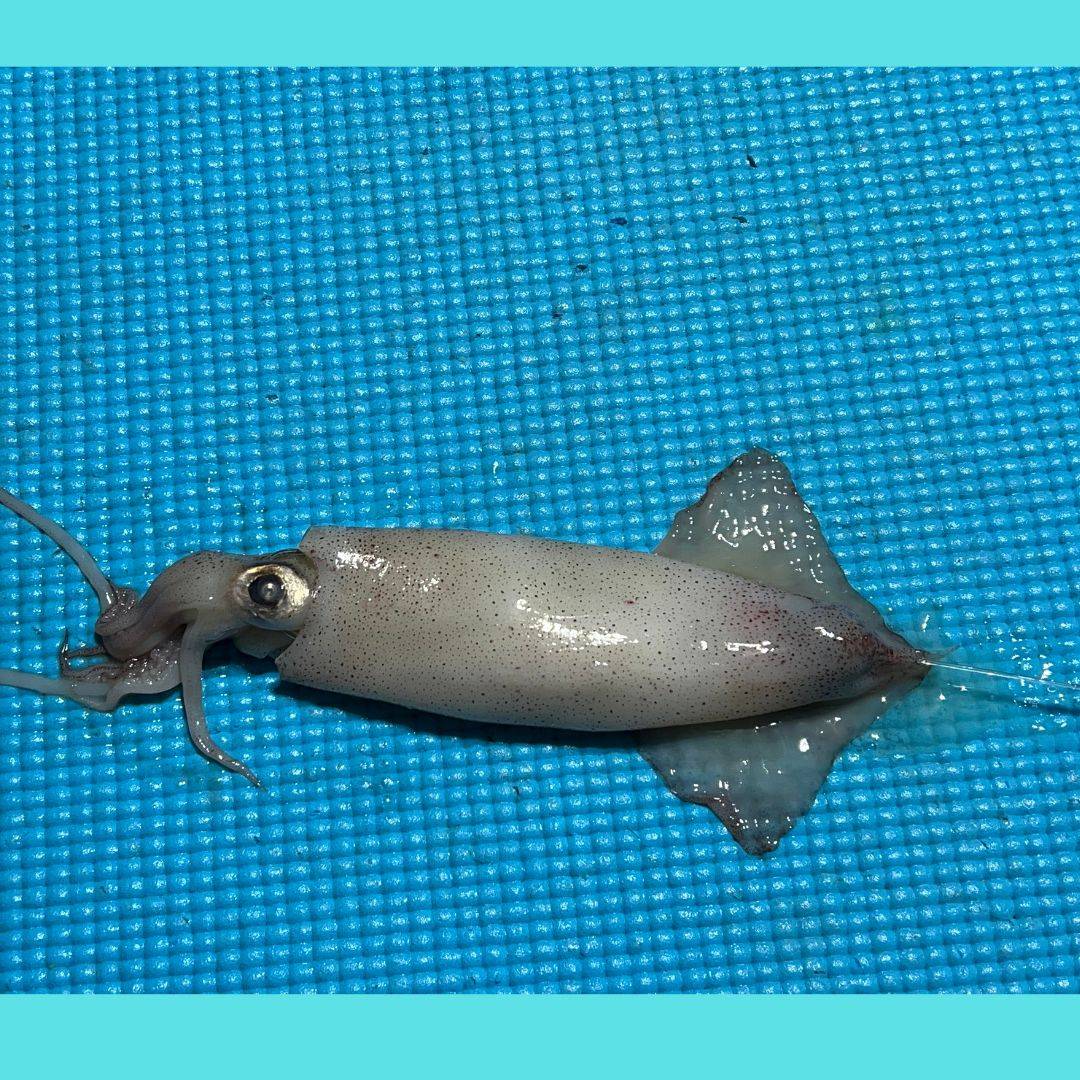
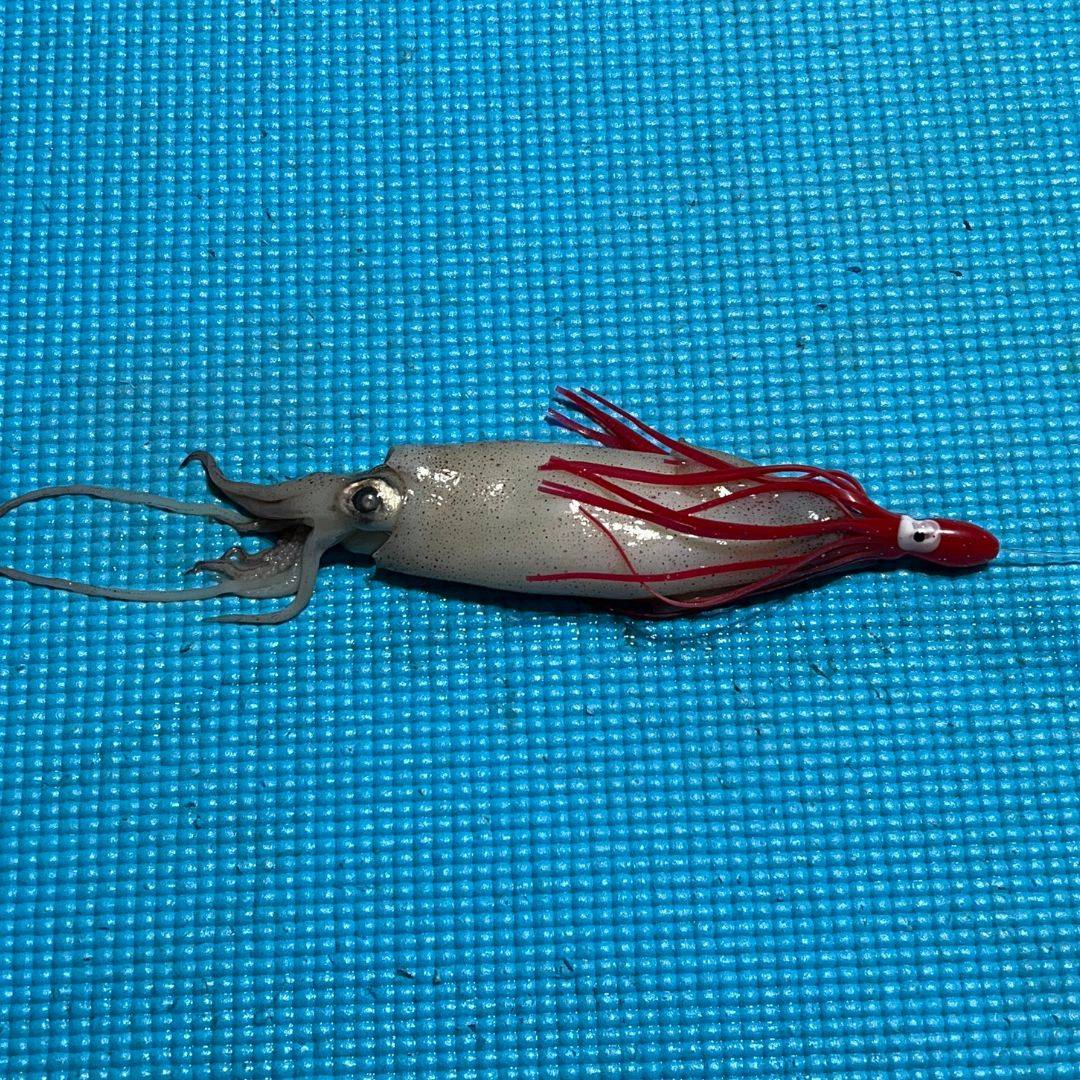
Squid is a versatile bait and I always take some whole squid any time I expect to encounter mahi.
Consider making some of the rigs we described. Give them a try if you encounter scattered grass and see what you think. I predict it will become your go-to bait for trolling in scattered grass